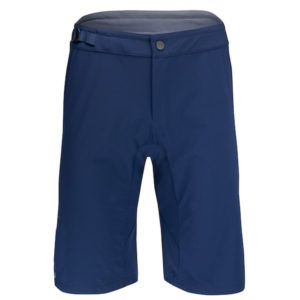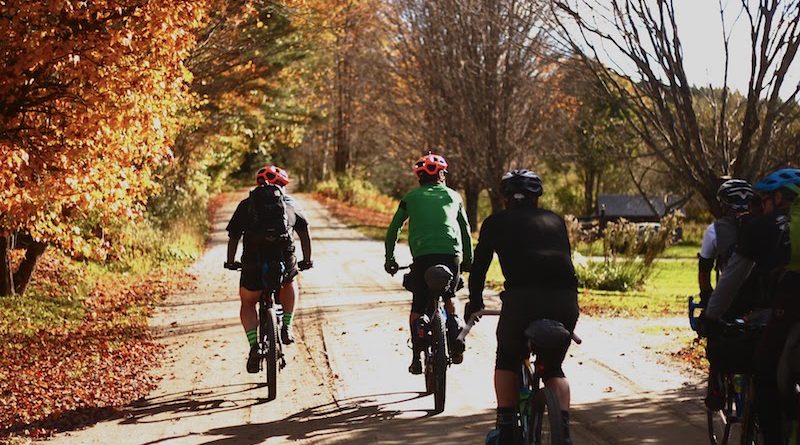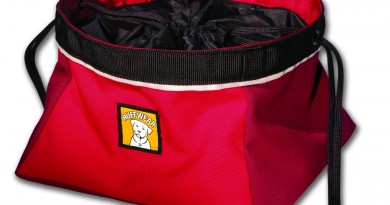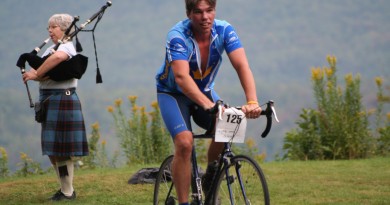Gearing Up for a Gravel Tour
What do you need for a bikepacking trip? Here are the basics.
BY JOE CRUZ AND LISA LYNN
When we did the Green Mountain Gravel Growler, we had with us the gear that, over the years, we’ve settled on for most of our bikepacking adventures. It’s a packing list not essentially different from what I had on the first trips I took, but the equipment is fancier, lighter, and more compact.
I suppose I take less of it: A packable tent, sleeping pad, and down quilt. A change of riding kit, a puffy jacket for after sunset, a rain jacket, hat, gloves, and leg warmers for inclement weather. There is a bar-mounted GPS and a repair kit.
We ride in baggy shorts and loose shirts because it’s comfortable and feels normal off the bike, but lots of people appreciate the technical virtues of cycling jerseys and bib shorts. No one judges. We didn’t carry cooking gear, relying instead on country stores and diners and brewpubs for our meals. We each carried a couple of beer koozies to insulate cans in the frame bag for an end of day toast at camp.
We were on racy gravel bikes, Salsa Warbirds. They were perfect for the well-maintained dirt roads that constitute the majority of the trip, but it’s true that we had our hands full, “underbiking” on the singletrack. “Underbiking” refers to when you’re riding a bicycle not quite intended for the ruggedness of the track. Many of us think of it as a distinctive kind of fun. Our bikes were quick and maneuverable with the soft bikepacking bag setup.
Panniers are convenient and familiar, but in my experience the hard points of attachment of a rack and pannier clips are prone to failure in rough conditions. Still, don’t let the kind of bags you have make you second guess leaving home. Plenty of people have done the GMGG with a pannier setup.
A new bicycle built for the special purpose of bike travel is wonderful, but to get out on a bikepacking trip is as easy as tuning up whatever bike you have—a hardtail 29er, a cyclocross bike, a touring bike that can fit 35mm+ semi-knobby tires—and unfolding a map on the kitchen table. With a plan and some camping gear, you’re ready to spend a few days out. An easy weekend means leaving work early on a Friday and riding into the evening, an all day ride on Saturday, and then a meandering Sunday that brings you back to your starting point.
That simple triangle—with nights spent in campgrounds, or Airbnbs, or splurging for an historic inn—is a great bikepacking trip. —Joe Cruz
The Gear
Kona Libre Gravel Bike
While you can bikepack any of the three routes listed on the previous pages on an old mountain bike, a hybrid or a gravel bike, the Kona Libre ($1999-$3999) is the ultimately versatile road-to-trail steed. With a Kona Race Light carbon frame and Verso carbon touring fork, it’s a light but strong frame fitted with wide, high handlebars, a low saddle and has a geometry that will be comfortable for long hauls over Vermont’s hills. With a dropper post (it’s compatible) it will have the feel of a hard tail mountain bike. The frame has mounts for everything you need (fenders, bottles, racks) and an internal dropper post. The Libre DL comes with a SRAM Force 1x and 700c wheels. The Libre (about $1,000 cheaper) has a Shimano 105 2x drivetrain and 650b wheels.
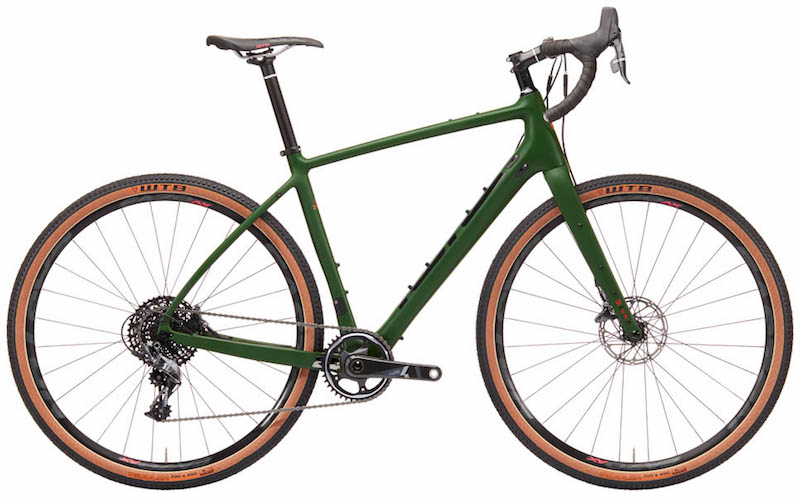
Garmin eTrex32x
As anyone who has ever tried to get cell coverage in Vermont knows, the most valuable piece of equipment for negotiating trails and backroads is a solid GPS with route maps. Garmin’s new eTre32x ($200, released this summer) comes preloaded with new TopoActive maps featuring routable roads, 8GB of internal memory and a microSD™ card slot so you can download more maps. Battery life is 25 hours (in GPS mode) and the unit uses two AA batteries so you can swap those out easily. It also has a barometric altimeter, compass and a 2.2 in. sunlight-readable color display with 240 x 320 display pixels for improved readability. Best of all, you can download customized maps, which if you are planning your own route, is key.

Ortlieb Seat Pack
Ortlieb specializes in making lightweight, durable and waterproof bags for bikepacking and other adventures. The 16.5 liter Seat Pack ($175) is a great way to store a jacket and a change of clothes and most bikepackers prefer this set up to panniers. The bag has adjustable closure straps and rolls up to a minimal size of 8 liters, for a day ride, with a valve to easily deflate any extra air. You do need 15 cm of free space on your seatpost but it can fit carbon posts too.
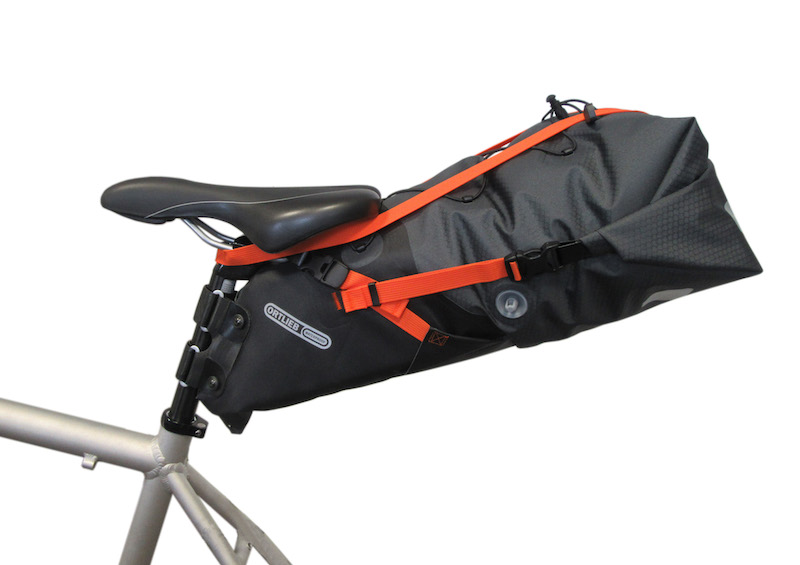
Big Agnes Cooper Spur UL2 Bikepacking Tent
Tent poles are the bane of bikepackers. But with the Cooper Spur UL2 ($499), Big Agnes has helped solve that problem. With the option of 12-inch Shortstik tent poles, this tent-and-pole pack can actually roll up tight enough to fit across your handlebars (inside the shifters on drop bars) or in a frame bag. Packed down in its water-proof sack and secured with its straps, the UL2 measures just 6 inches x 12 inches and weighs 3 lbs, 7 ounces. Set up, the two-person, three-season tent has a 9 foot x 9 foot vestibule, straps to store helmets and pockets for phones and other gear.
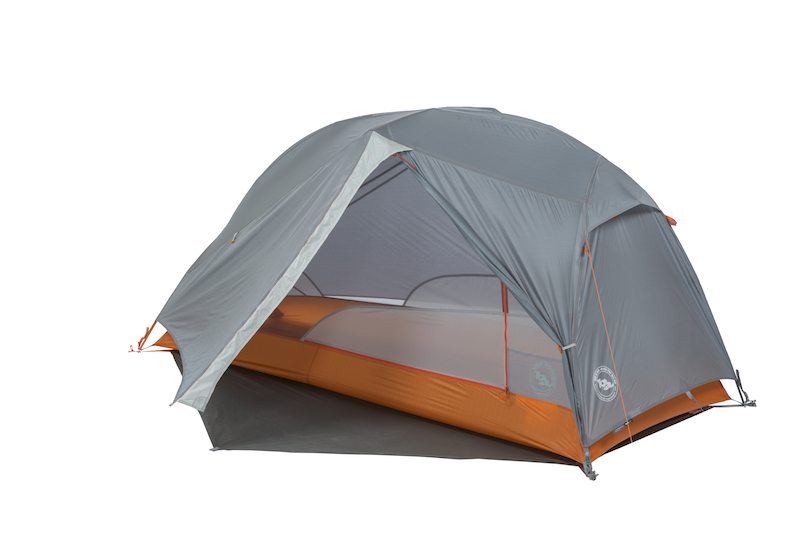
The Nemo Banshee
Unzip the Nemo Banshee ($369.95) and it’s a comfy quilt that’s great for picnicking by the side of the trail or tossing under you on a hot night. Zip it up (and we love the front zipper), pull on the drawstrings on the collar and foot box, and it becomes a sleeping bag that will keep you warm down to 20 degrees, thanks to the synthetic, hydrophobic down (meaning it won’t bunch up when wet). The bag packs down to 14 x 5.5 inches and weighs in at 1 lb, 11 ounces.

MSR Thru-Link Water Filter
Having enough water is essential for any bikepacking trip and Vermont has plenty of streams where you can resupply. The new (for 2020) Thru-Link Water Filter ($39.95,) is ideal for a bikepacking trip as the 2.5-ounce filter attaches to your hydration reservoir and filters water as you drink. This means you never have to stop to filter water. In camp, turn the reservoir upside down and it filters water into a cup or kettle.
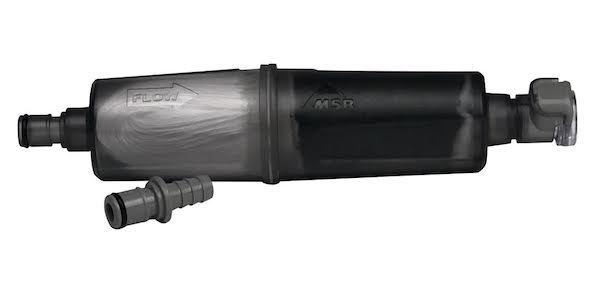
Maloja Cycling Tights
With its first U.S. flagship opening at Mountain Road Outfitters in Stowe in September, Maloja is making inroads in bike apparel and ski apparel. The German company, rooted in the Alps, specializes in “Made for the Mountains” apparel. The women’s three-quarter length MinorM. ($159) tights with a bistretch seamless Chamois lining are great for fall riding — on road or gravel—and come in three colors. The flat waistband with silicone laminate insert on the back side keeps the tights where you want and the flatlock seams won’t chafe. The tights come in three colors.
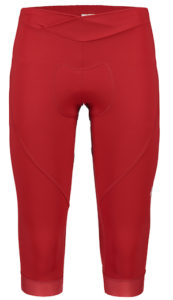
Velocio Trail Shorts
Designed in Vermont, Velocio’s apparel has brought a sleek sense of style to road cycling. Now, there’s a line of trailwear that slips over padded bike shorts or bibs. The super light-weight, trim-fit Trail Shorts ($159) make a great cross-over from road to gravel to trail. Made from a four-way-stretch Polyamide Mec-Tex fabric milled in Italy, they give where you want them to but come back to looking great when you step off the bike and head in for a beer. The shorts come in both men’s and women’s sizing and in three colors: Navy, Titanium and Coral Red. —L.L.
